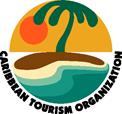 CTO this morning presented its annual Caribbean Tourism Performance Report 2017 & Outlook.
CTO this morning presented its annual Caribbean Tourism Performance Report 2017 & Outlook.
The catastrophic hurricanes that devastated some Caribbean destinations last September slowed down tourism’s progress but did not stop it, according to figures released by the Caribbean Tourism Organization (CTO).
Ryan Skeete, the CTO’s acting director of research announced at a news conference streamed to a global audience that the Caribbean reached the 30 million mark in stay-over arrivals for the first time ever last year, even as the region battled the effects of hurricanes Irma and Maria, as well as Hurricane Harvey, which lashed parts of the United States, the Caribbean’s primary market.
Total visitor spending reached an estimated US $37 billion, he reported.
Stay-over arrivals had been on track for a strong performance during the first-half of 2017, growing by an estimated 4.8%. But there was a major slowdown in the second half performance due to the impact of the September hurricanes, after which tourist visits declined by 1.7%.
As a result, overall tourism visits increased only 1.7% to reach 30.1 million visits for the full year, said Skeete. This marks the 8th consecutive year of growth, albeit slower than the average global growth rate of 6.7%. As a result, the Caribbean market share of global visits in 2017 shrunk by 0.1 percentage points, to register 2.3% of the market.
Tourist arrivals showed uneven growth among destinations. Several countries reported double-digit increases in 2017 including Saint Lucia (11%), Belize (10.8%), and Bermuda (10.3%), while the hurricane-impacted countries recorded decreases ranging from -18% to -7%.
The contributing factors to the excellent performances in those countries with increase included greater air access from the source markets to the region and significant investments, including in hotels, to enhance the tourism product.
The major Caribbean sub-regions reporting declines included the US Territories (-7.9%), the Dutch Caribbean (-6.6%) and the Organization of Eastern Caribbean States (OECS) (-3.6%).
The grouping dubbed Other Caribbean comprising Cancun, Cozumel, Cuba, the Dominican Republic, Haiti and Suriname, which accounts for almost half of all arrivals to the region, recorded an increase of 6.0% and Caricom recorded an increase of 1.7%.
Market Trends
Most major source markets recorded growth except the South American and Caribbean markets which declined by 6.5% and 1.3% respectively, reflecting weak economic conditions.
The major Caribbean source market, the U.S., grew by approximately 0.5% to reach an estimated 14.9 million visits to the region.
Arrivals from the European market totaled 5.8 million and improved by an estimated 6.2%, the strongest growth among the main markets.
Visits from the Canadian market rebounded in 2017, growing by 4.3% compared to a decline of 3.1% in 2016. The country’s strong economic performance and increased seat capacity to the region helped support this recovery.
Cruise Trends
Cruise passenger arrivals also set a new landmark in 2017. Despite the hurricanes, cruise arrivals reached an estimated 27.0 million visits to the region, 2.4% higher than in 2016.
The cruise passenger performance mirrors the performance of tourist arrivals, as it grew strongly (4.6%) in the first half of 2017, but contracted marginally (-0.4%) in the second half of the year, said CTO. Cruise passenger arrivals fell dramatically in September by some 20%. However, growth resumed in October, which saw a 2% increase.
Visitor expenditure
Consistent with increases in stay-over and cruise visits, total visitor expenditure is estimated to have increased by approximately 2.6% to reach US$37.0 billion in 2017. This performance marks the eighth consecutive year of growth. Overall, stayover visitors spent an estimated US$34.2 billion or US$1,230 per trip compared to US$1,129 per trip in 2016.
Outlook
Global economic conditions are expected to be favorable in 2018. All of the major economies are projected to grow strongly, oil prices are expected to remain relatively low, and hourly wages are expected to increase again in the US following years of stagnation. These factors bode well for tourism in the Caribbean. On the downside, there is rising geopolitical tensions, the persistent threat of major terrorist attacks, and the heightened risk of extreme weather events. Consequently, we are projecting that tourist arrivals will increase between 2 and 3% in 2018.
According to the Florida-Caribbean Cruise Association (FCCA), booking data indicates that demand for Caribbean cruises remains quite strong. The demand is supported by their multimedia campaign, “The Caribbean is Open”, launched soon after the hurricanes. Consequently, we project that cruise arrivals will accelerate in 2018, to register a growth rate of between 2 and 3%.









